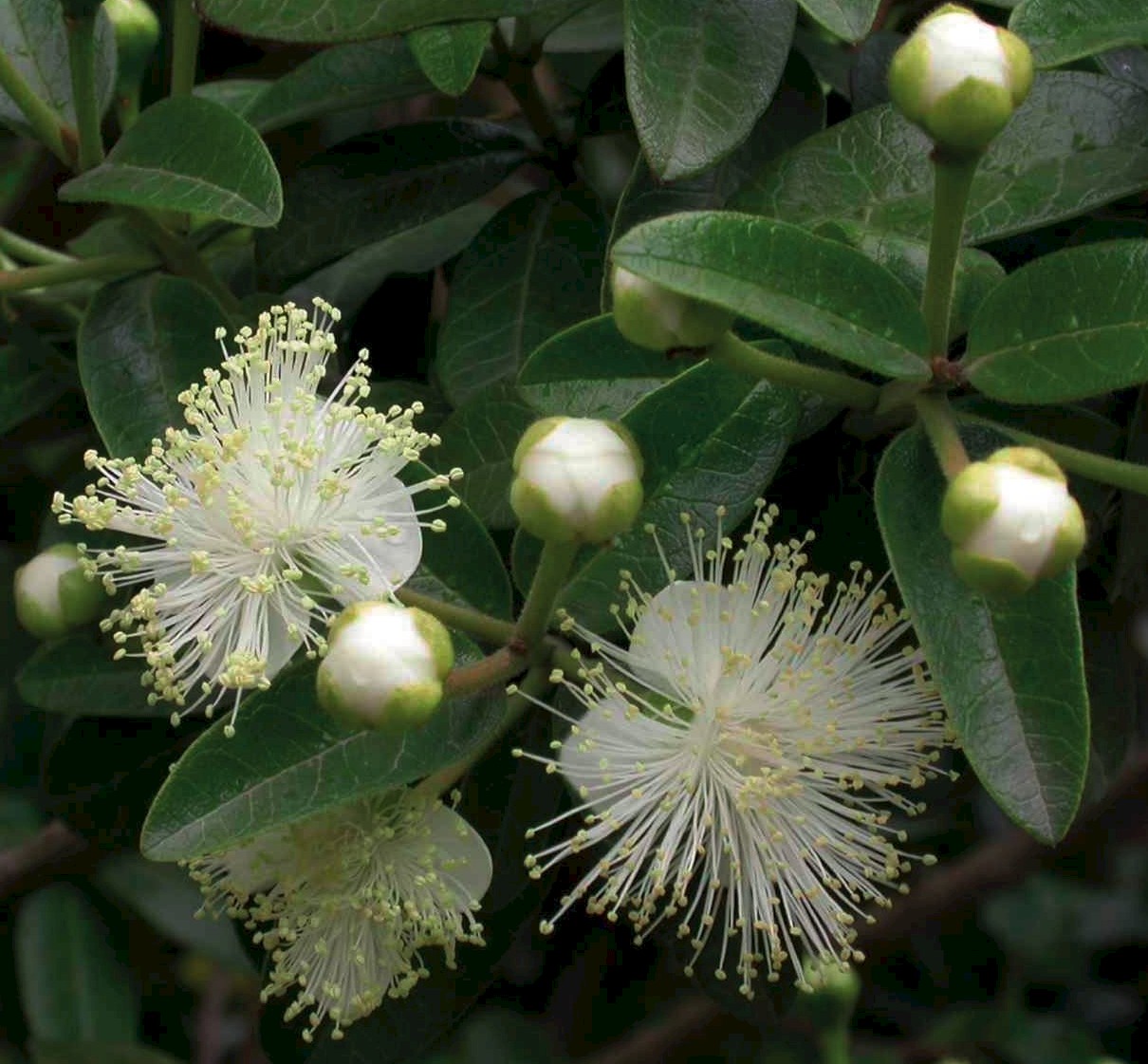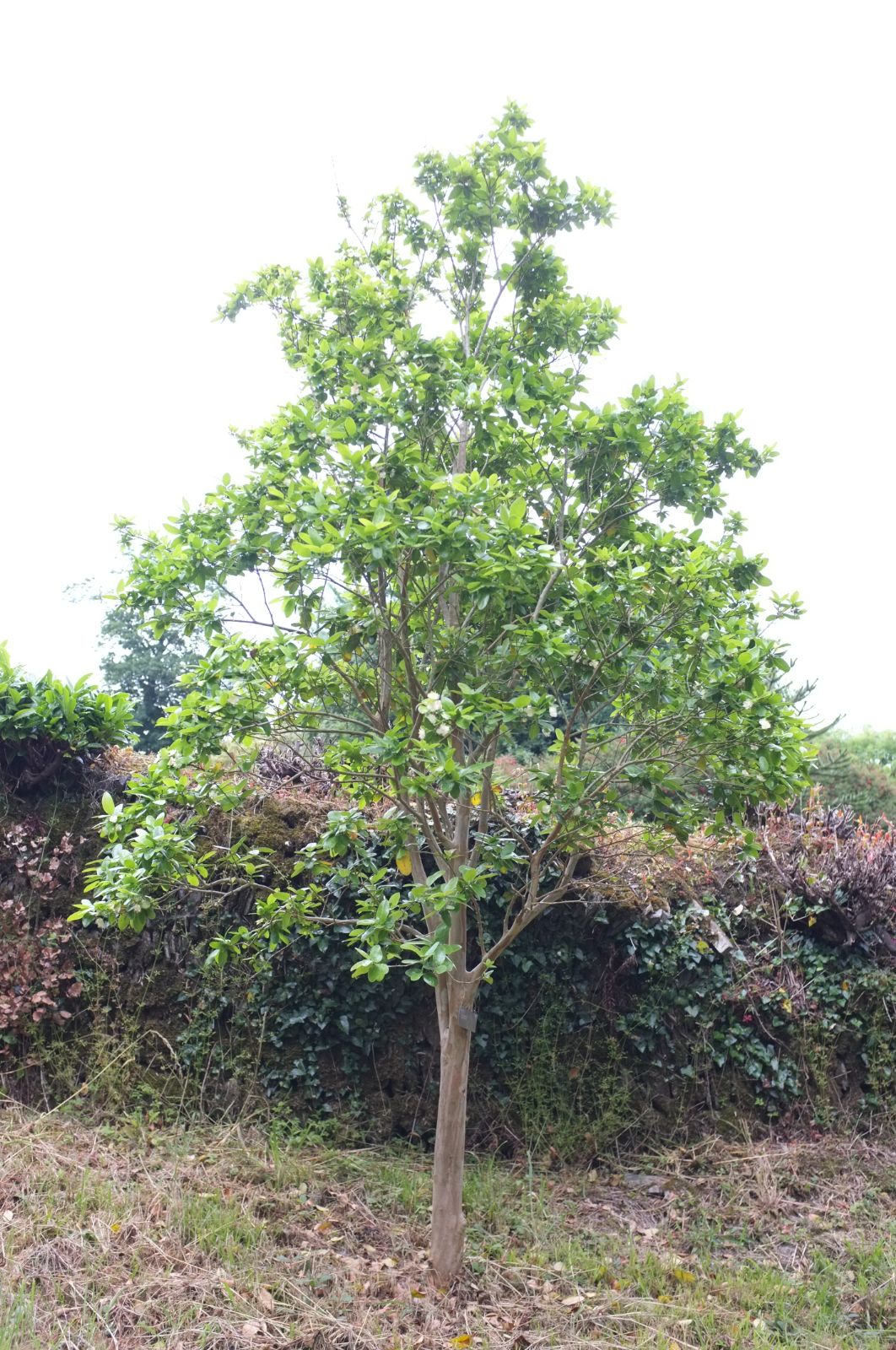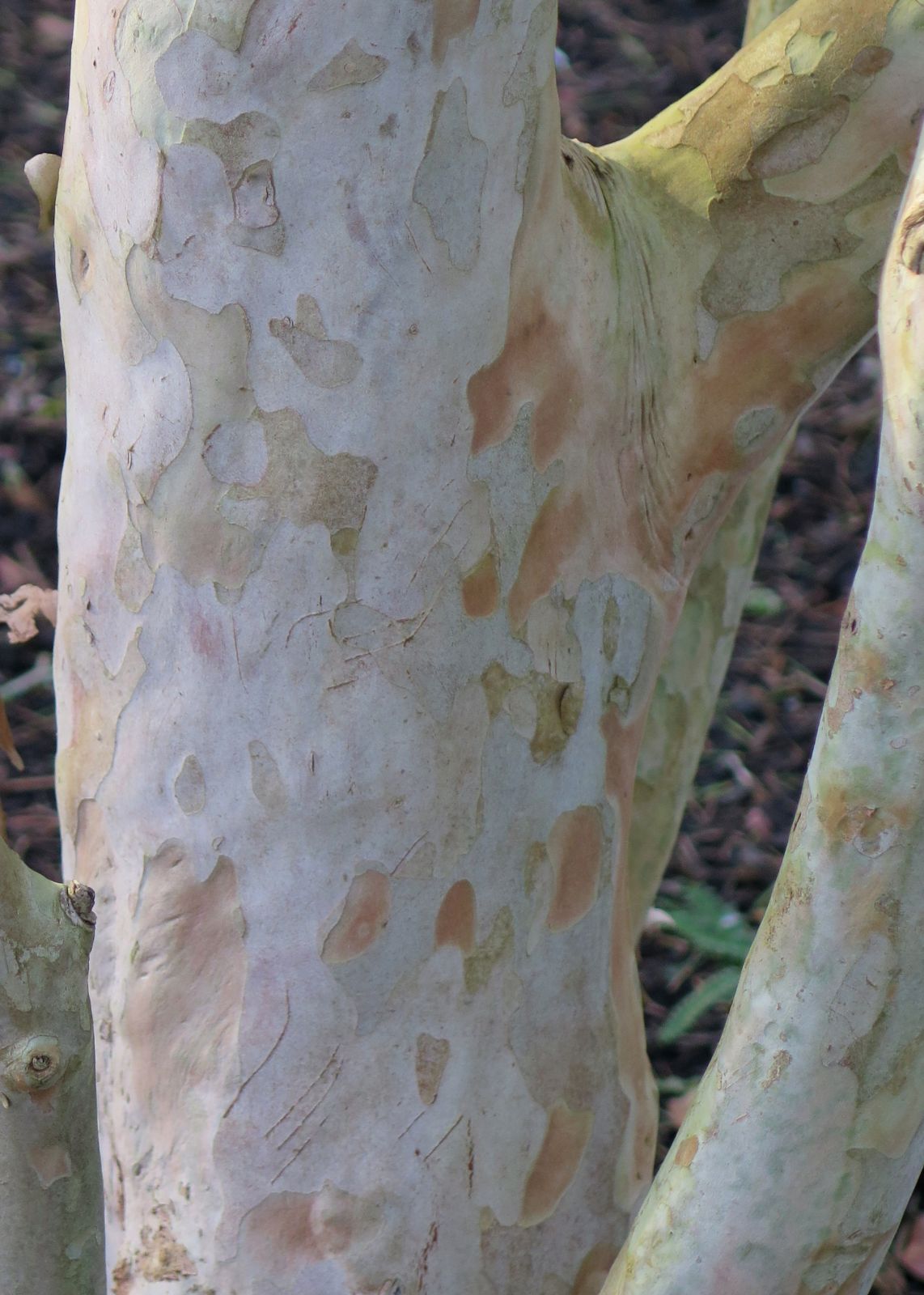Legrandia concinna
Credits
Article from New Trees by John Grimshaw & Ross Bayton
Recommended citation
'Legrandia concinna' from the website Trees and Shrubs Online (treesandshrubsonline.
Genus
Common Names
- Luma del Norte
Other taxa in genus
Small tree to ~8 m. Branchlets four-angled, reddish brown, moderately pubescent, becoming grey and rough with age. Leaves evergreen, somewhat leathery, fragrant, 2–5.5 × 0.8–3 cm, elliptic to ovate or obovate, glabrous or sparsely pubescent along the midrib and margins, often with cavities in vein axils of lower surface, five to eight secondary veins on each side of midrib, margins entire, apex obtuse to rounded; petiole 0.1–0.3 cm long, shallowly channelled. Flowers 4-merous, solitary, axillary, subtended by leafy bracteoles, 0.7–0.9 cm long; peduncles 1–3.5 cm long, glabrous or sparsely pubescent; calyx lobes triangular or semicircular, 0.3–0.4 cm long; petals subcircular to obovate, 0.7–1 cm long; hypanthium conical to campanulate, densely pubescent; stamens ~200–400, 0.7–1.2 cm long. Fruit yellowish, subglobose, 1.5–2.5 cm long, containing a single seed (rarely, two to five seeds). Landrum 1986. Distribution CHILE: Bío-Bío, Maule. Habitat Wet temperate forest in the Andes. USDA Hardiness Zone 8. Conservation status Not evaluated (IUCN). Critically endangered (Gardner et al. 2006). Illustration Landrum 1986, Gardner & Hechenleitner 2005, Gardner et al. 2006; NT444.
Legrandia is an extremely attractive myrtle from the temperate forests of central Chile, where it is confined to less than a total of 75 ha in five known subpopulations (Gardner et al. 2006). Here it grows with a number of other evergreens described in this book – Aextoxicon, Cryptocarya, Persea lingue and Quillaja – which together with better-known Nothofagus and Luma species make up a fascinating ecosystem. As with all of these, Legrandia should be given a sheltered warm site in rich moist soil, if and when it becomes available to horticulture.
At present it is known in cultivation only in the gardens of the Royal Botanic Garden Edinburgh, grown from a collection made by Bernardo Escobar in Región VII in 1999. At Inverleith it is planted against a glasshouse wall and has grown steadily, now being about 2 m tall. When mature it has beautifully exfoliating bark, reminiscent of the familiar Luma apiculata (DC.) Burret, on trunks that carry the tree to 8 m. The leaves are comparatively large and broad, extremely glossy dark green when mature but emerging ‘deep plum-red … which rivals the young growth of any Photinia’ (Gardner & Hechenleitner 2005). The foliage alone makes it worth growing, but it is also capable of smothering itself in abundant large white myrtle flowers. These are followed by as fine a show of big red fruits. With all these qualities it is evidently a highly desirable species, and Martin Gardner (pers. comm. 2005) believes that it would be a good commercial plant – with due regard to the Convention on Biological Diversity and agreements with the Chilean authorities for benefit sharing. It can be propagated from seed or by cuttings (Gardner et al. 2006).



